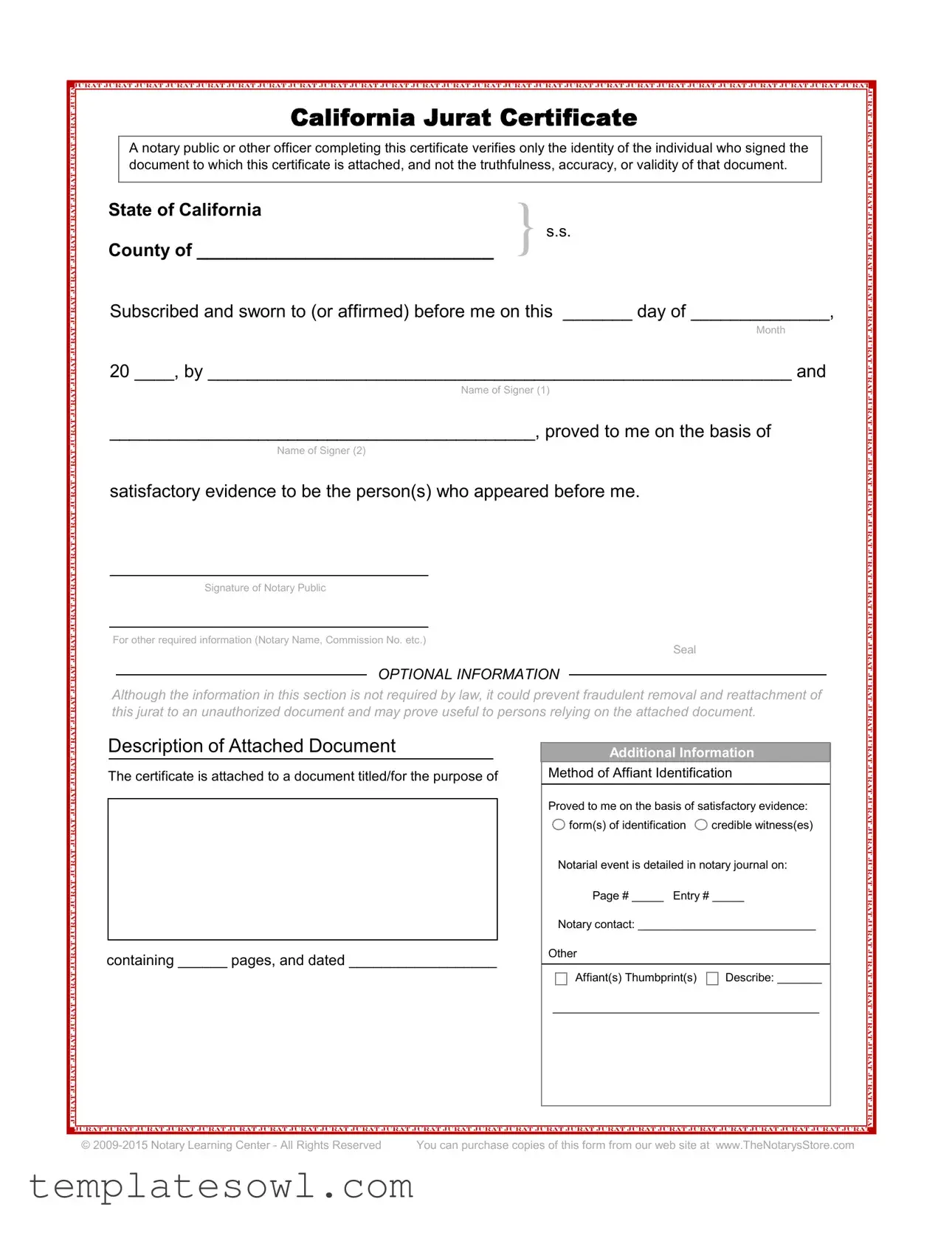Fill Out Your California Jurat Form
The California Jurat form is a crucial document used in notarization, specifically to certify that a signer has sworn or affirmed the truthfulness of the contents of a statement or affidavit. This form includes essential details such as the signer's name, the date, and the notary's information, ensuring both parties understand the importance of the declaration. To simplify the process of filling out this important legal form, click the button below.
Launch California Jurat Editor Now

